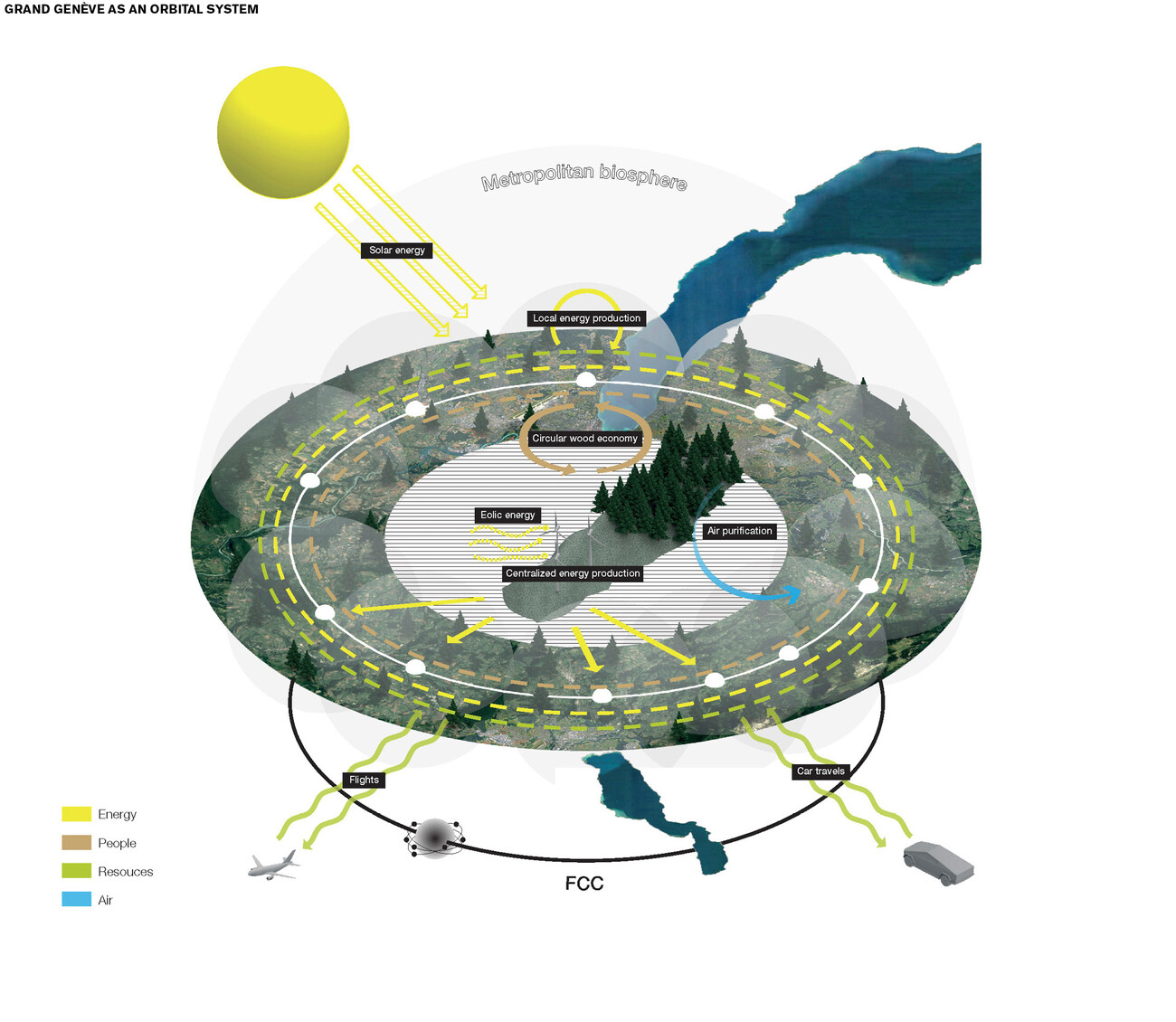Grand Geneva 2050 Masterplan, Geneva, Switzerland

In accordance with the Paris Agreement of 2015, Switzerland also supports the goal of limiting global warming to a maximum temperature increase of 1.5 degrees. Therefore, CO2 emissions must be "net zero" by the middle of the century, and the amount of carbon dioxide in the atmosphere must no longer increase. Geneva is the capital of the Swiss canton of the same name, located between the Alps and the Jura mountains at the southern tip of the lake to which it also gives its name. The greater Geneva area extends beyond the country's borders. What will this area look like in the future? How will people live there in 2050?
Seven research groups have addressed this question and proposed projects that range from realism to utopia. Among them is the team led by Stefano Boeri Achitetti with Transsolar as part of the team. Together with the team we design alternative forms of housing that combine comfort for users with environmental sustainability, looking for good solutions for energy balances with net zero CO2 emissions and a proper waste management system.
The traditional building material wood is part of a circular strategy for which new forests are created on converted agricultural land to compensate for the significant demand for building materials and the resulting CO2 pollution. New buildings on site are expected to be CO2 emission free, which requires maximum passive performance. A LCCA (Life Cycle Cost Analysis) will become mandatory when a decision has to be made between replacing or renovating an existing building. If possible, existing buildings will be rehabilitated with all-in-one façades that, while retaining the building's core, will have a completely new envelope providing the mechanical systems for climatization.
Energy will be generated on-site from renewable resources only, whether from centralized or decentralized stations will depend on settlement density. In densely populated places, a centralized system will distribute thermal energy locally (district heating), while settlements with low to medium density will remain self-sufficient through decentralized systems. Roofs and façade surfaces will be used to provide photovoltaic and solar-thermal energy. A new wind turbine field, placed on the upper part of the central mountain area, will harness as much wind power as possible. All of these systems stand together in a smart interconnected grid where energy moves as needed, supported by load management. For the goal of keeping the consumption of electrical energy within limits, there shall be a threshold for electricity consumption (plug-loads) per person, with the electricity price increasing if this limit is exceeded. To enable CO2 neutrality with renewable resources alone, storage systems are needed, both for thermal and electrical energy. These buffer seasonal fluctuations between production and demand, storing excess energy from summer for use in winter.

